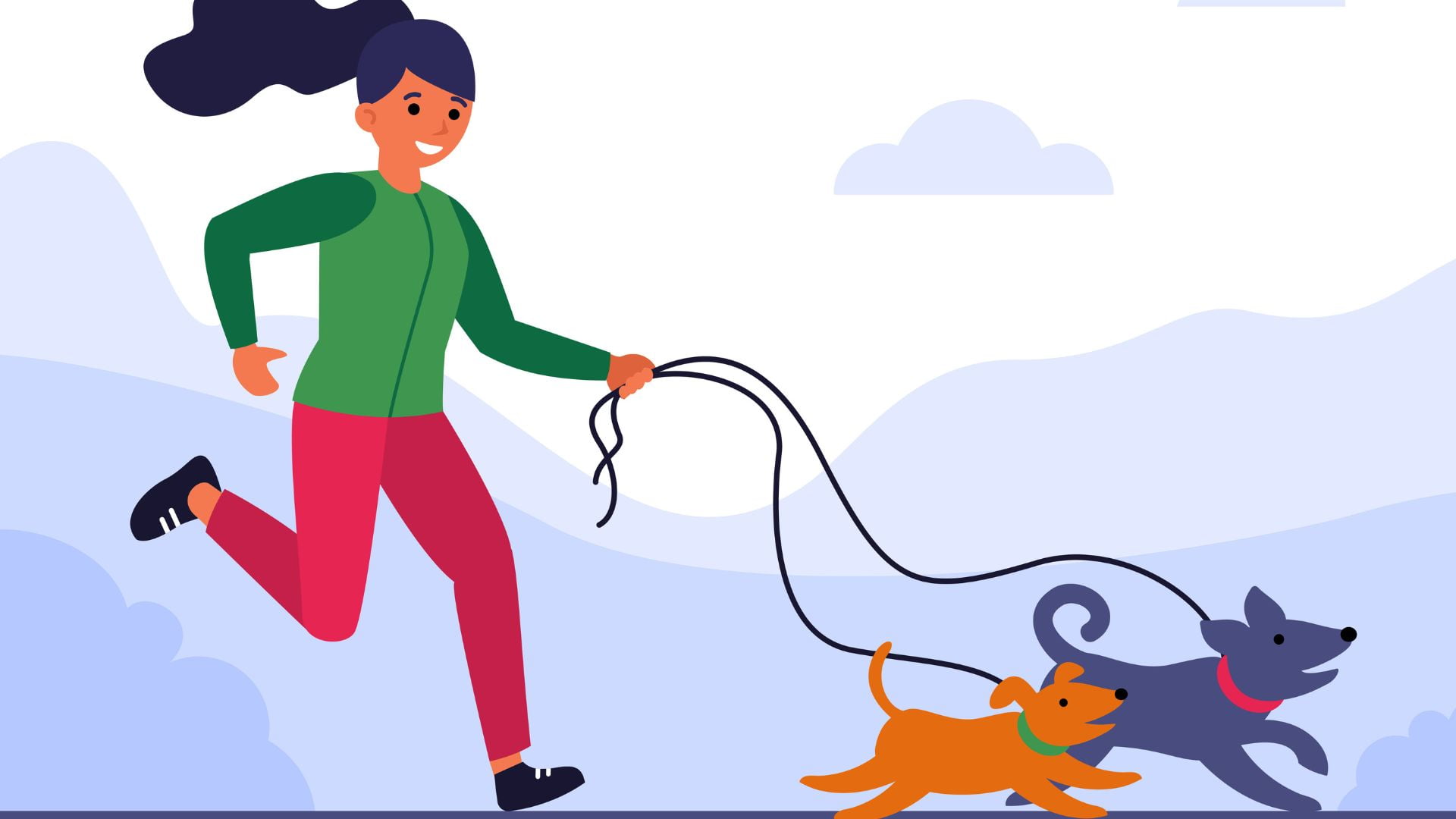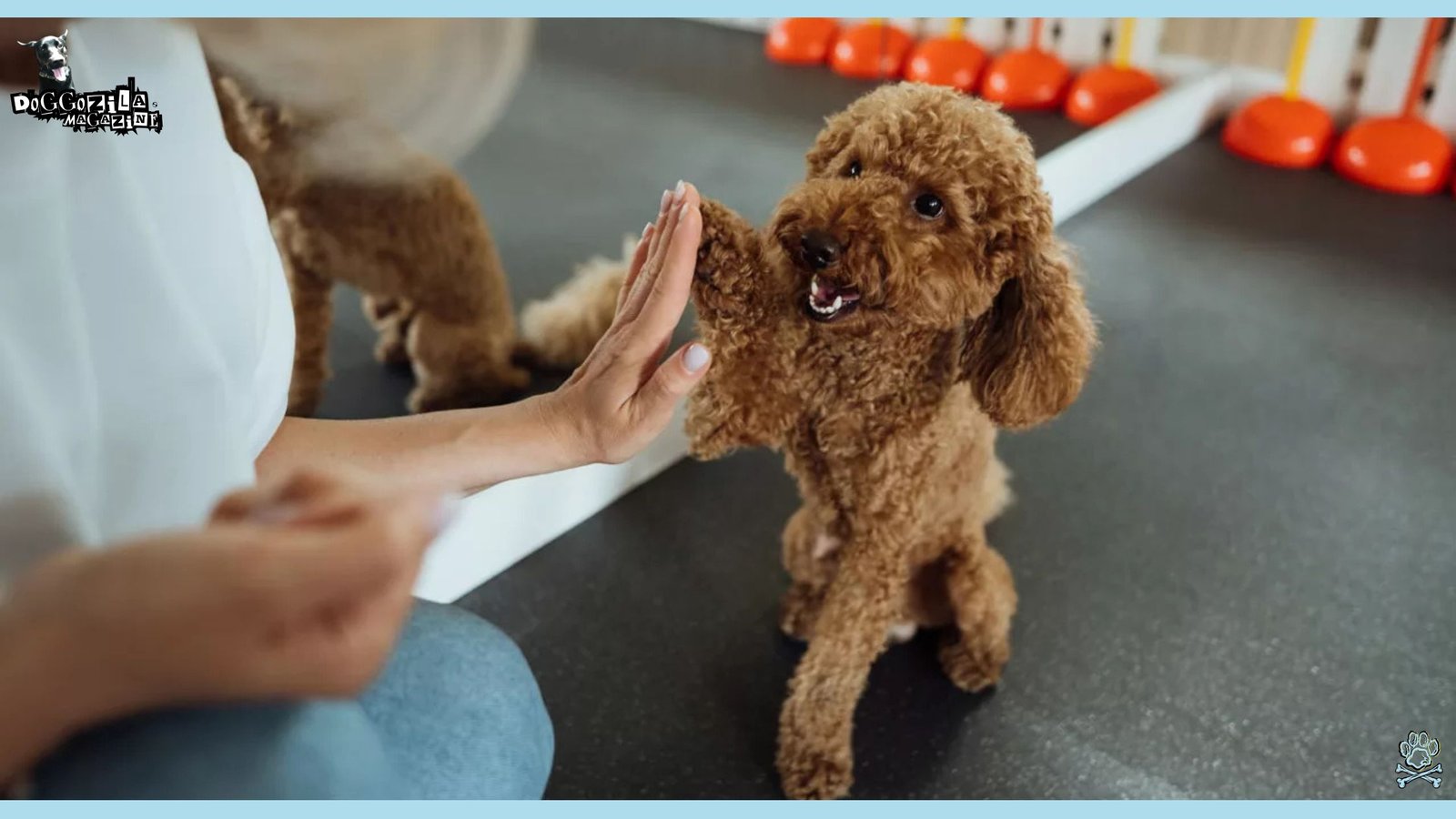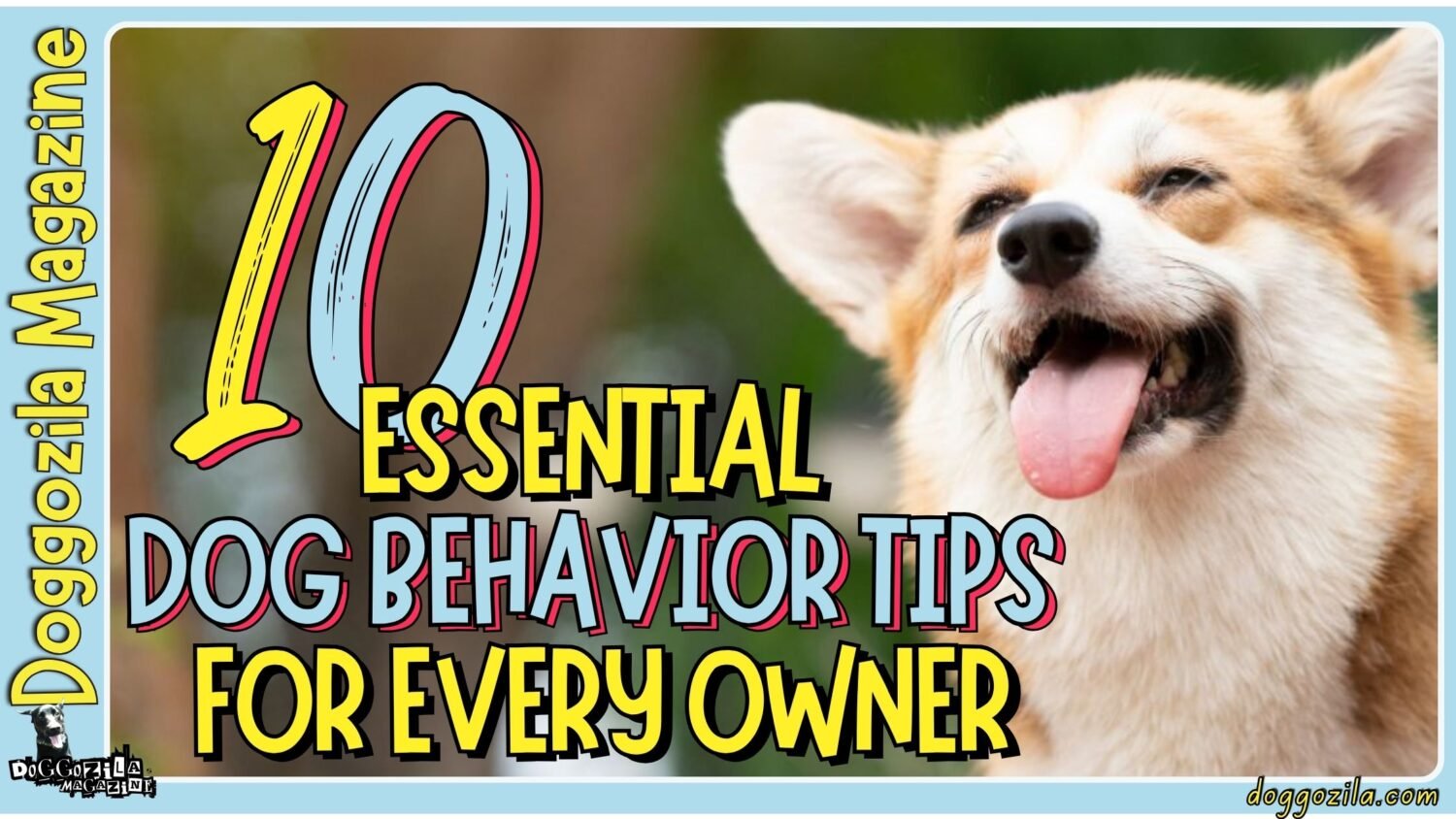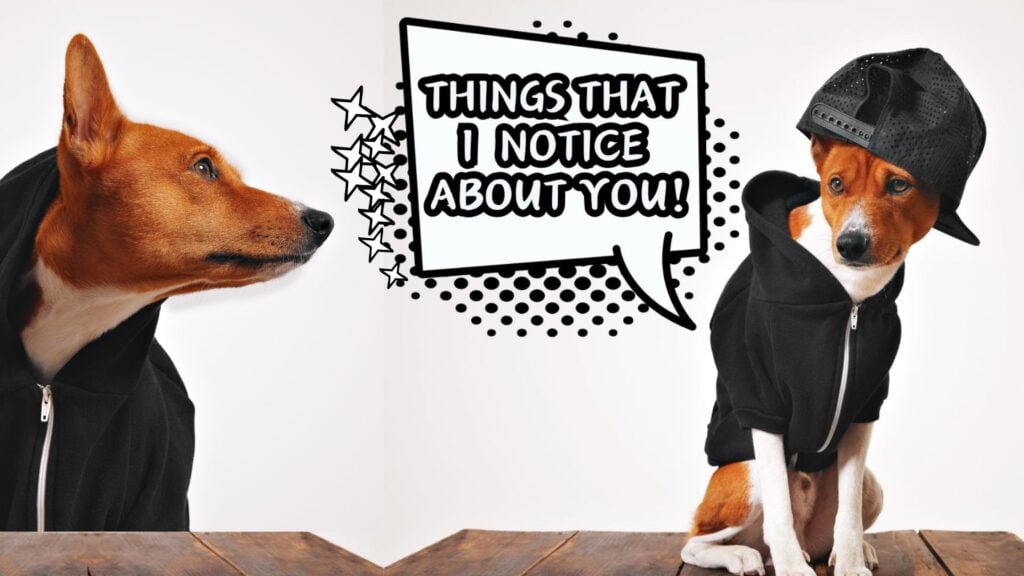Walking your dog on a leash is one of the most basic and essential skills you and your dog need to master. Not only is it a legal requirement in most places, but it also ensures your dog’s safety and comfort, as well as your own. Find out more in the complete guide on how to train your dog to walk on a leash!

LEASH TRAINING FOR DOGS AND DOG OWNERS
Leash training can be challenging, but it doesn’t have to be impossible. With some patience and consistency, you can teach your dog to walk on a leash calmly and politely. In this article, we will explain why dogs pull on the leash, how to train your dog to walk on a leash an to stop pulling. What to avoid doing when leash training.By following these tips, you can enjoy a more pleasant and relaxing walk with your furry friend.
Why Do Dogs Pull on the Leash?
Before we dive into the training methods, let’s first understand why dogs pull on the leash in the first place.
There are several possible reasons for this behavior, such as:
- Instinct: Dogs are naturally curious and adventurous animals that want to explore their surroundings and follow their noses. When they are on a leash, they may feel restricted or frustrated by the limited space and speed they have. They may pull on the leash to try to get to something interesting or exciting, such as another dog, a squirrel, or a trash can.
- Lack of training: Dogs are not born with the knowledge of how to walk on a leash. They need to be taught what is expected of them and how to behave on the leash. If they are not trained properly or consistently, they may develop bad habits or misunderstandings that lead to pulling on the leash.
- Reinforcement: Dogs may also pull on the leash because they have learned that it works for them. If they pull on the leash and get what they want, such as reaching their destination faster or getting closer to something they like, they will repeat the behavior. On the other hand, if they don’t pull on the leash and get nothing in return, they will stop the behavior.
Mastering The Art Of Leash Walking: A Game Changer For Your Furry Companion
Picture this: you’re out for a leisurely stroll with your beloved pooch, only to find yourself being dragged along like a reluctant rag doll as your dog forges ahead, pulling relentlessly on the leash.
Sound familiar?
Well, buckle up, because leash-pulling is a behavior that not only puts a damper on your quality bonding time but can also pose serious risks to your furry friend’s well-being. From neck strain and spinal issues to breathing troubles, the consequences of this untamed tugging can be far-reaching. But fear not, for we’ve got the scoop on nipping this undesirable habit in the bud, ensuring a harmonious and enjoyable experience for both you and your four-legged pal!

UNLEASH THE SECRET TO TRAIN YOUR DOG TO WALK ON A LEASH: STEP-BY-STEP GUIDE
Rejoice, dog parents, for the solution to this leash-pulling conundrum lies within your grasp!
By following a few simple yet effective steps, you’ll be on your way to transforming your pup into a model citizen on the sidewalk. The key? Teaching your furry friend that walking on a loose leash is not only more rewarding but also way more fun than yanking you around like a tug-of-war champion.
Intrigued? Let’s dive in!
Tips to Train Your Dog to Master Leash Walking Like a Pro
- Gear up for success: The first order of business is to ensure you’ve got the right equipment for the job. Invest in a well-fitted collar or harness that won’t cause your pup any discomfort or pain, and pair it with a leash that strikes the perfect balance between allowing some slack and preventing tangled messes. Steer clear of choke chains, prong collars, or retractable leashes, as these can potentially harm your furry pal or inadvertently reinforce that pesky pulling behavior.
- Lay the foundation with obedience training: Before you embark on your leash-walking odyssey, ensure your dog has a solid grasp of the basics. We’re talking commands like sit, stay, come, down, and heel. These handy tricks will not only help you communicate effectively with your pup but also give you a measure of control over their behavior when you hit the pavement. To supercharge your training sessions, consider incorporating a clicker (a nifty device that makes a clicking sound) or verbal markers like “yes” or “good” to pinpoint the exact moment your pup nails a command, followed by a well-deserved treat or praise.
- Embrace the Journey: A Leash training for your canine dog to stroll by your side without tugging can be a game-changer for your daily walks. The secret sauce? Positive reinforcement! Reward your furry friend with treats, toys, praise, or attention whenever they display the desired behavior. You can mix it up with different prizes or stick to one type for consistency.

UNLEASH THE ZEN MASTER WITHIN: MINDFUL WALKING FOR A HARMONIOUS BOND
Now that you’ve got the groundwork covered, it’s time to put those leash-walking skills into practice. Embrace a mindful approach by allocating dedicated sessions solely focused on perfecting this new skill. Start in a low-distraction environment, like your backyard or a quiet street, and reward your pup with treats or affection whenever the leash remains loose and they maintain a relaxed pace by your side.
transform your leash puller into a relaxed walking companion
As your furry friend masters this art, gradually increase the difficulty by introducing more distractions and varying the length and intensity of your walks. Remember, consistency is key, so be patient and persistent. With time and practice, your once-unruly leash-puller will transform into a well-mannered walking companion, and those leisurely strolls will become cherished moments of bonding and joy for both of you.
Once you train your dog to walk on a leash, both of you, the dog and you (the owner) would be encouraged to train even more than just to walk on a leash! When that happened, feel free to visit our Train Room for more dog training!
Mastering the Art of Heeling to Train Your Dog To Walk On A Leash
The next level in your training journey is teaching your pup to heel, walking calmly beside you without pulling on the leash.
Here’s a step-by-step guide to help you nail it!
- Get into position!
Stand tall with your dog at your side, leash in the opposite hand.
- Give the command!
Say “let’s go” or “walk” and take one step forward.
- Reward the good behavior!
If your dog follows without pulling, click your training clicker (or use a marker word) and give them a treat or praise.
- Pause and reset!
If your dog pulls ahead or wanders off, stop in your tracks. No need for yanking or scolding – just wait patiently until they return to your side or make eye contact. Then, click and reward.
- Repeat and increase!
Keep practicing, gradually increasing the number of steps before rewarding.
Remember, consistency and patience are key. With time and practice, your dog will learn to stay by your side, making your walks more enjoyable for both of you.
Mixing It Up: Practicing in Different Environments to Train Your Dog To Walk on a Leash
Once your dog has mastered the art of heeling in your living room or backyard, it’s time to take the show on the road. Practice in different settings, like your neighborhood or a local park, slowly increasing the level of distractions. Always start in low-key areas and reward your pup for walking politely without pulling.
If they slip up, simply pause, reset, and continue reinforcing the desired behavior. With time and consistency, your dog will become a pro at loose-leash walking, no matter the surroundings.

WHAT TO AVOID WHEN YOU TRAIN YOUR DOG TO STOP PULLING ON THE LEASH ON A WALK?
While training your dog to stop pulling on the leash, there are some things you should avoid doing as they can make the problem worse or create new ones.
Here are some of them:
Steer Clear of Negative Reinforcement
Negative reinforcement means taking away something your dog dislikes. Examples as shock collar, a spray bottle, or a muzzle, when he stops pulling. While this may seem like a quick fix, it can actually backfire and cause more harm than good.
Negative reinforcement can make your dog more fearful or aggressive towards you or others. He may associate the leash with pain or discomfort. It can also damage your relationship with your dog, as he may lose trust in you or resent you.
Avoid Physical Punishment at All Costs
Physical punishment means hitting, kicking, or slapping your dog for pulling. This is never acceptable and can have serious consequences for your dog’s physical and mental health. Physical punishment can hurt your dog, injure him, or even kill him.
It can make your dog more fearful or aggressive towards you or others! He may learn to defend himself or retaliate. It can also damage your relationship with your dog, as he may lose respect for you or fear you.
Don’t reward the wrong behavior
Rewarding the wrong behavior, such as showering your dog with attention, affection, or treats when they pull on the leash, is counterproductive. While this may seem like a way to calm or comfort them, it can inadvertently reinforce the pulling behavior, making your dog think that this action is desirable and will be rewarded. This can create confusion and uncertainty about what you expect from them, hindering the training process.
FINAL TAKEAWAY ON HOW TO TRAIN YOUR DOG TO WALK ON A LEASH
Hey there, dog owners, let’s be real!
So walking your furry pal can be a real hassle when they’re constantly yanking on that leash, right? But fret not, my friends! With a bit of persistence and consistency, you can kiss that pesky pulling goodbye and turn your pooch into a true sidewalk strutter.
Yup, you read that right – by following these simple tips, you’ll have your doggos strolling calmly by your side in no time!
First up, let’s get one thing straight!
Dogs are naturally inclined to lead the way, so it’s crucial to establish yourself as the pack leader from the get-go. This means setting clear boundaries and reinforcing positive behavior with tasty treats and plenty of praise. Trust me, your pup will be wagging their tail in no time once they realize that good things come to those who walk nicely!
Next, invest in a quality leash and harness. These tools are game-changers when it comes to controlling your dog’s movements and minimizing pulling.
Hopefully this article helped you to train your dog to walk on a leash, for more training articles visit our Train Room! Remember that dog training is an ongoing process that requires love, patience, and understanding.










